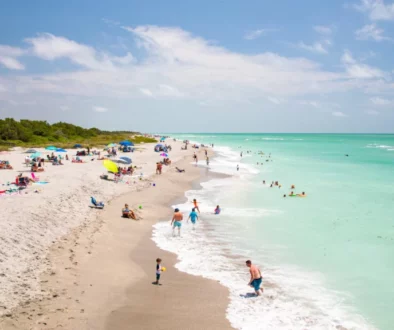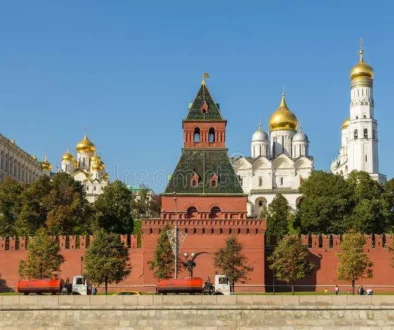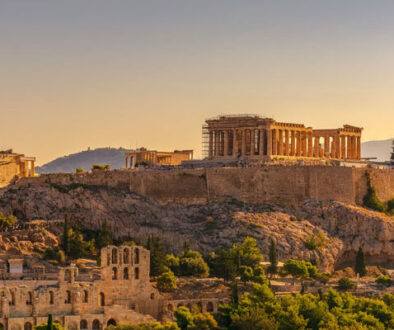Mexico City Memoirs: A Tapestry of Aztec and Colonial Heritage
Mexico City, the vibrant capital of Mexico, is a city steeped in history that showcases a rich tapestry of Aztec and colonial heritage. From the ancient ruins of Tenochtitlan to the grandeur of colonial architecture, the city offers a captivating blend of cultures. In this article, we will delve into the Spanish conquest and colonial period, explore the diverse museums and art galleries, visit historical sites and landmarks, and savor the vibrant gastronomy and cuisine of Mexico City.
Spanish Conquest and Colonial Period
The arrival of Spanish conquistadors in Mexico City marked a turning point in its history. Led by Hernán Cortés, the Spanish conquistadors conquered the Aztec empire and transformed the city into the colonial stronghold of New Spain. The impact of colonization on Aztec culture and society was profound, as Spanish influence intertwined with pre-existing traditions.
During the colonial period, Mexico City flourished as the capital of New Spain. The city became the center of political, economic, and religious power. Colonial architecture and landmarks stand as reminders of this era, showcasing a blend of Spanish and indigenous architectural styles. The Metropolitan Cathedral, a crowning achievement of colonial architecture, stands proudly in the zocalo, the main square, symbolizing the fusion of European and indigenous cultures.
Museums and Art Galleries
Mexico City boasts a wide array of museums and art galleries that capture the essence of its history and cultural heritage. The National Museum of Anthropology is a titan among museums, showcasing an extensive collection of archaeological artifacts from Mexico’s indigenous civilizations, including the Aztec empire. The museum’s exhibits provide an in-depth exploration of Mexico’s diverse pre-Columbian cultures, enriching our understanding of their art, traditions, and way of life.

The Frida Kahlo Museum, also known as Casa Azul, offers a glimpse into the life and art of one of Mexico’s most celebrated painters. Located in the house where Frida Kahlo was born and later lived with her husband, Diego Rivera, the museum houses a remarkable collection of her paintings, personal belongings, and photographs. It provides an intimate and immersive experience, revealing the spirit and creative genius of this iconic artist.
Historical Sites and Landmarks
The historical sites and landmarks of Mexico City transport visitors to different eras of its past. The Templo Mayor, an archaeological site situated in the heart of the city, was the spiritual and political center of the Aztec empire. Excavations have unearthed magnificent ruins, including grand temples and intricate sculptures. These remnants of Tenochtitlan provide a glimpse into the ancient Aztec civilization that once thrived here.
The ruins of Tenochtitlan, the former capital of the Aztec empire, are preserved beneath the modern city. Exploring these ruins is like stepping back in time, as you walk along the ancient streets and observe the remnants of Aztec architecture and urban planning. These archaeological treasures bear witness to the grandeur of the Aztec civilization, reminding us of its significance in Mexico City’s history.
The Metropolitan Cathedral, located adjacent to the Templo Mayor, stands as a testament to the enduring legacy of colonial architecture. This magnificent structure boasts a mix of architectural styles, ranging from Renaissance to Baroque. Its imposing presence and intricate detailing make it an architectural masterpiece that has become an iconic symbol of Mexico City.
Gastronomy and Cuisine
Mexican cuisine is renowned worldwide for its bold flavors and diverse ingredients, and Mexico City is a gastronomic treasure trove. Traditional Mexican cuisine, deeply rooted in indigenous traditions, has shaped the city’s food scene. From street food stalls offering mouthwatering tacos al pastor and tamales to high-end restaurants reinventing classic dishes, Mexico City caters to every culinary desire.
Exploring the local delicacies is an essential part of any visit to Mexico City. Try the rich and complex flavors of mole, a savory sauce made with a blend of chilies, spices, and chocolate. Indulge in chiles en nogada, a festive dish filled with a savory meat mixture and topped with a creamy walnut sauce, pomegranate seeds, and parsley. Immerse yourself in the vibrant street food culture, trying favorites like elote (grilled corn on the cob) and tlacoyos (thick tortillas stuffed with beans, cheese, or other fillings).

Renowned restaurants throughout the city offer unique culinary experiences, combining traditional flavors with innovative techniques. From world-class fine dining establishments to hidden gems tucked away in neighborhoods, Mexico City’s restaurants are a testament to the city’s gastronomic prowess.
Spanish Conquest and Colonial Period
The arrival of Spanish conquistadors in Mexico City marked a turning point in its history. Led by Hernán Cortés, the Spanish conquistadors conquered the Aztec empire and transformed the city into the colonial stronghold of New Spain. The impact of colonization on Aztec culture and society was profound, as Spanish influence intertwined with pre-existing traditions.
During the colonial period, Mexico City flourished as the capital of New Spain. The city became the center of political, economic, and religious power. Colonial architecture and landmarks stand as reminders of this era, showcasing a blend of Spanish and indigenous architectural styles. The Metropolitan Cathedral, a crowning achievement of colonial architecture, stands proudly in the zocalo, the main square, symbolizing the fusion of European and indigenous cultures.
Museums and Art Galleries
Mexico City boasts a wide array of museums and art galleries that capture the essence of its history and cultural heritage. The National Museum of Anthropology is a titan among museums, showcasing an extensive collection of archaeological artifacts from Mexico’s indigenous civilizations, including the Aztec empire. The museum’s exhibits provide an in-depth exploration of Mexico’s diverse pre-Columbian cultures, enriching our understanding of their art, traditions, and way of life.
The Frida Kahlo Museum, also known as Casa Azul, offers a glimpse into the life and art of one of Mexico’s most celebrated painters. Located in the house where Frida Kahlo was born and later lived with her husband, Diego Rivera, the museum houses a remarkable collection of her paintings, personal belongings, and photographs. It provides an intimate and immersive experience, revealing the spirit and creative genius of this iconic artist.

Historical Sites and Landmarks
The historical sites and landmarks of Mexico City transport visitors to different eras of its past. The Templo Mayor, an archaeological site situated in the heart of the city, was the spiritual and political center of the Aztec empire. Excavations have unearthed magnificent ruins, including grand temples and intricate sculptures. These remnants of Tenochtitlan provide a glimpse into the ancient Aztec civilization that once thrived here.
The ruins of Tenochtitlan, the former capital of the Aztec empire, are preserved beneath the modern city. Exploring these ruins is like stepping back in time, as you walk along the ancient streets and observe the remnants of Aztec architecture and urban planning. These archaeological treasures bear witness to the grandeur of the Aztec civilization, reminding us of its significance in Mexico City’s history.
The Metropolitan Cathedral, located adjacent to the Templo Mayor, stands as a testament to the enduring legacy of colonial architecture. This magnificent structure boasts a mix of architectural styles, ranging from Renaissance to Baroque. Its imposing presence and intricate detailing make it an architectural masterpiece that has become an iconic symbol of Mexico City.
FAQs
What is the best time to visit Mexico City?
The best time to visit Mexico City is during the months of March to May and September to November. During these times, the weather is generally pleasant, with mild temperatures and less rainfall. It is recommended to avoid the summer months, as they tend to be rainy and can be quite hot.
Are there any safety concerns for tourists in Mexico City?
Like any big city, Mexico City does have certain safety concerns that tourists should be aware of. It is recommended to take common-sense precautions, such as avoiding walking alone in unfamiliar areas at night and keeping an eye on personal belongings. It is also advisable to use reputable taxi services or ride-sharing apps for transportation. Additionally, it is always helpful to stay updated on current travel advisories and follow the guidance of local authorities.
Mexico City has a well-connected public transportation system that offers several options for getting around. The metro is a popular and efficient mode of transportation, with numerous lines that connect different parts of the city. Alternatively, you can also utilize the Metrobús system, which operates bus rapid transit lines. Both options are budget-friendly and reliable. Additionally, taxis and ride-sharing apps are readily available for convenient transportation.
What are some must-try traditional dishes in Mexico City?
Mexico City is a food lover’s paradise, offering a wide array of delicious traditional dishes. Here are a few must-try options:
- Tacos al pastor: These succulent tacos feature marinated pork cooked on a vertical rotisserie and served with pineapple, cilantro, and onions.
- Chiles en nogada: A festive dish typically enjoyed during Mexican independence celebrations, it consists of roasted poblano peppers stuffed with a mixture of meat, fruits, and spices, topped with a creamy walnut sauce, and garnished with pomegranate seeds.
- Tamales: These steamed corn husks filled with a variety of fillings, such as meat, cheese, or vegetables, are a staple of Mexican cuisine. They make for a delicious and satisfying meal.
- Pozole: A hearty and flavorful soup made with hominy corn and meat (usually pork or chicken) and garnished with shredded lettuce, radishes, onions, and lime. It’s a traditional dish often enjoyed on special occasions or weekends.
- Churros: Indulge your sweet tooth with these delightful fried dough pastries, dusted with sugar and typically served with a side of hot chocolate for dipping.
Can you recommend any off-the-beaten-path attractions in the city?
While Mexico City has a wealth of well-known attractions, there are also several hidden gems worth exploring. Here are a few off-the-beaten-path recommendations:
- Mercado de Sonora: This bustling market is known for its unique selection of items related to esoteric practices and traditional Mexican folk medicine. Explore stalls selling herbs, amulets, tarot cards, and more.
- Casa Azul Museo Frida Kahlo: While Frida Kahlo’s Blue House is a popular tourist spot, taking the time to visit this museum offers a deeper understanding of the renowned artist’s life and works. Explore her personal belongings, artworks, and gain insight into her fascinating world.
- La Casa de los Azulejos: Translating to “The House of Tiles,” this visually stunning building showcases beautiful blue and white tilework. Enjoy a meal at the restaurant inside, which features a charming courtyard.
- Xochimilco Ecological Park and Ecological Reserve: Escape the city’s hustle and bustle and immerse yourself in the tranquility of Xochimilco. Take a relaxing boat ride through the picturesque canals and marvel at the floating gardens called chinampas.
Conclusion:
Mexico City, with its rich tapestry of Aztec and colonial heritage, is a destination that captivates the imagination and stirs the soul. It is a city of contrasts, where ancient ruins coexist with modern marvels, and vibrant traditions intertwine with contemporary art. From its archaeological sites to its world-class museums, from its tantalizing cuisine to its lively festivals, Mexico City invites visitors on an extraordinary journey through time and culture.
Also Read:



